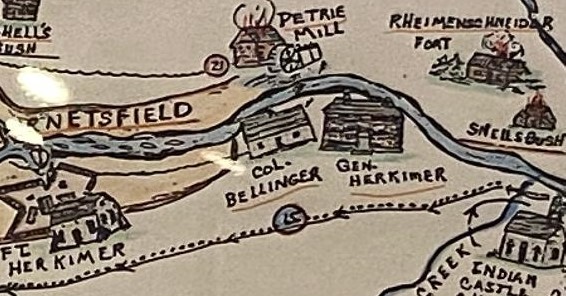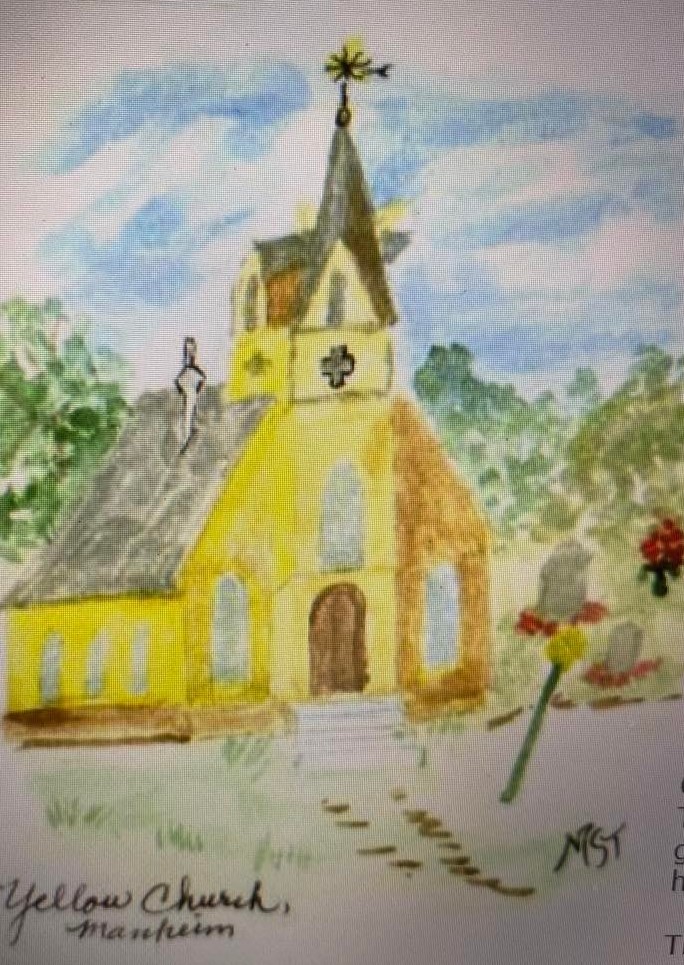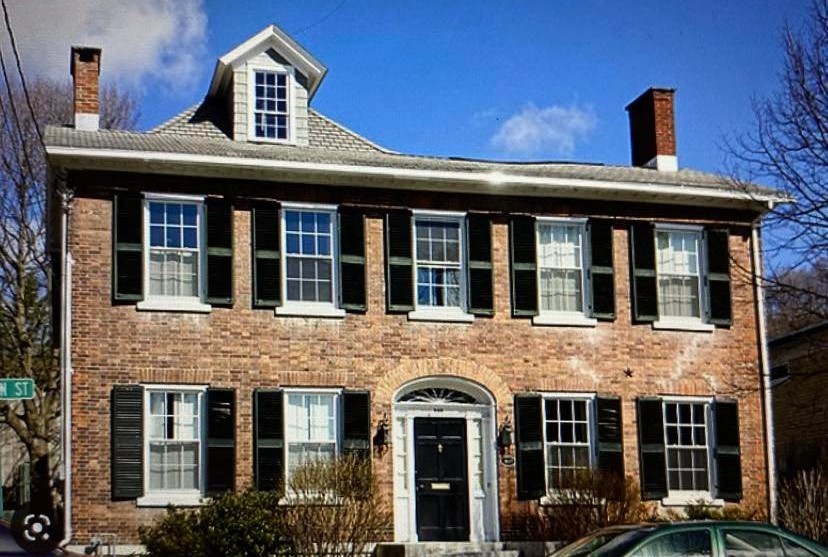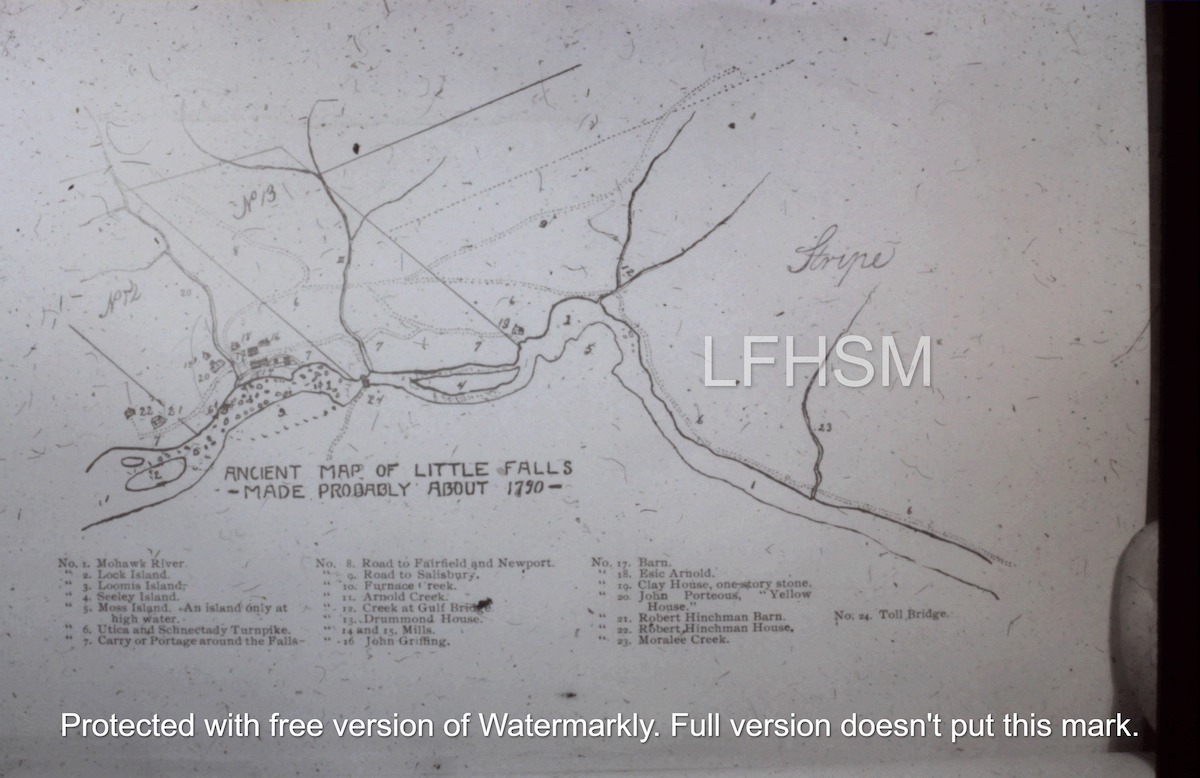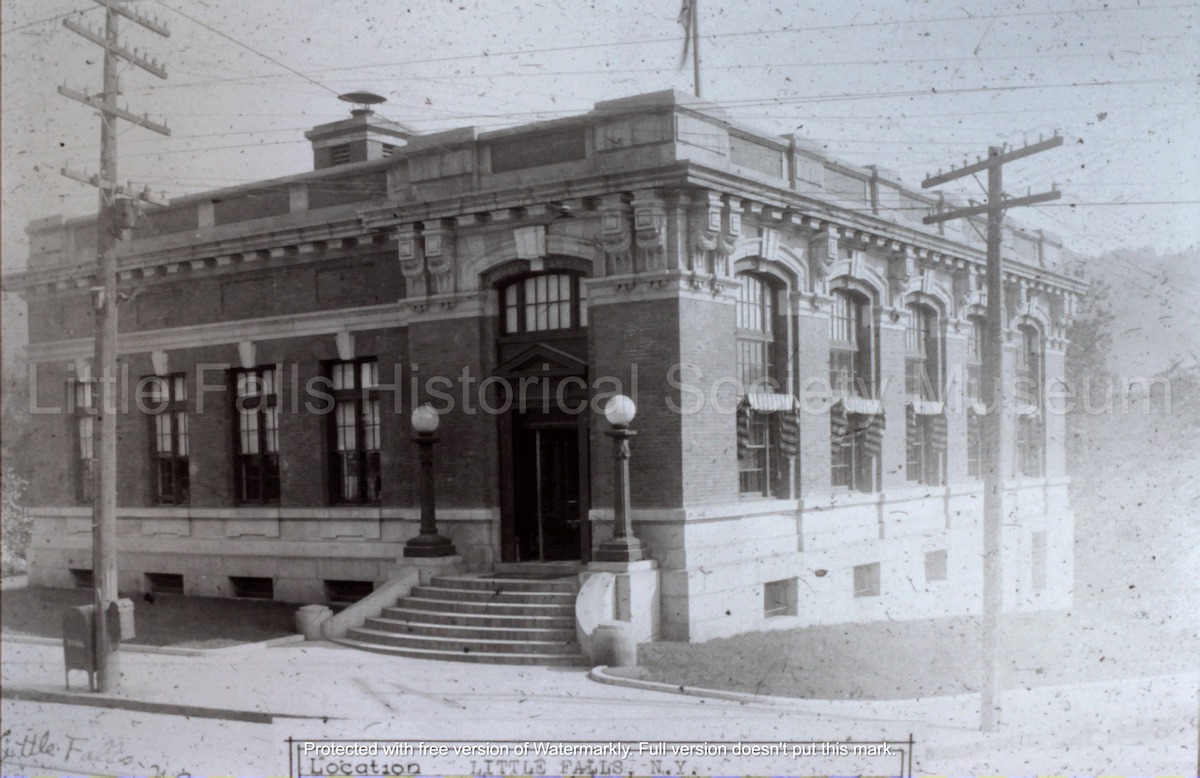ON MARCH 30, 1797, John Porteous was appointed postmaster at the little falls, and the post office was located in his store.
“The early mail was delivered once a week punctually by Adam Feeter.”
March 30, 1797, Cooney Archives
COLONEL WILLIAM FEETER
Adam Feeter was the son of the Revolutionary Patriot Colonel William Feeter (Wilhelm Vetter). William’s wealthy parents, Lucas (a black smith) and his first wife Agnes Vetter (Feeter), immigrated from Schoenaich in the County of Wuerttemberg, Germany in 1754, on the ship Neptune. They settled at Stone Arabia, with the purchase of two farms. Lucas and Agnes, soon became attached to the Johnson family, with naming the 1756 birth of their son William, after the patron Sir William Johnson.
In 1761, Lucas was one of the original applicants for a land lot within the Royal Grants. In 1768, Lucas received a land lot within the Michael Byrne Patent, known as the Stony Hill Patent, in Schoharie County. The Royal Land Grant was for 18,000 acres, which were divided amongst sixteen people, with Lucas receiving a large portion of the acreage.
Lucas’s first wife died in 1765, when William was nine years of age. Lucas remarried in 1766, to a relative of Sir William Johnson, Maria Eva Serviss. William, being Johnson’s namesake, spent his childhood in the company of the Johnson children.
Their neighbors, mainly Palatine Germans, objected to the feudal manor system that Johnson was trying to create. William sided with his Palatine German neighbors when the uprising began against Britain. In 1777, at the age of twenty-one, William left home, breaking ties with his Loyalist family. He was given a rifle and a temporary home by his Patriot neighbor, Mr. Youney.
After the war, William’s family followed Sir John Johnson to Canada, with the Feeter land holdings being confiscated under the Attainder Acts of 1779. William fought New York State through the courts for the return of his share of the Feeter properties. William received his share of the land holdings, subsequently selling his interests to purchase a homestead within a German Palatine settlement at Riemenschneider’s Bush, which was located three miles north of Little Falls.
Riemenschneider’s Bush was raided on the 3rd of April in 1880 by a group of sixty Indians and Loyalists, who had raided and burned through the Mohawk Valley during the American Revolution, from 1778 through 1782. They captured nineteen German Palatines and took them captive to Canada, with them being released when the war ended. The Riemenschneider’s Bush area of the 1700s, is present-day Manheim, which became well known in the mid-1800s for the cheese factories that were located within the hamlet. William was one of the original contributors of the Octagon Church at Little Falls, while he also supported his neighborhhod church, the “Yellow Church”, which was razed in 1965. The Yellow Church Cemetery is the final resting place for Colonel William Feeter and forty-nine other Patriot soldiers.
THE PEOPLE’S FRIEND
In 1797, William established the first postal service enterprise through the Royal Grant, known today as the Mohawk Valley. He was an intelligent man and enjoyed current reading material, but there were no newspapers published in the area at this time west of Albany. The first weekly newspaper in the Little Falls area, the “Peoples Friend”, wasn’t established until 1821 by twenty-three year old Edward Griffing. The paper was first published on the north side of Main Street at Mechanic’s Hall. At a later date, the publication was then moved to the home of James Sander’s, which is the present-day 546 Garden Street. The People’s Friend contained very little local news, with the publication favoring politics and world news. This early newspaper eventually became known as the Journal and Courier Newspaper.
ADAM FEETER- MOHAWK VALLEY’S PONY EXPRESS
William felt that others may also enjoy current newspapers, along with letter correspondence from family and friends. His new venture began with hiring his sixteen-year-old son Adam, being one of his twelve children, to deliver the mail and newspapers on horseback from Albany to Little Falls, with Adam being the first pioneer “Pony Express” in the Royal Grants. Adam delivered the mail from 1797 through 1800, making weekly mail deliveries at Kane’s store in Canajoharie and at Porteous’s Yellow House in Little Falls.
In 1800, Adam was offered a designated governmental mail route, which he declined. In later years, Adam worked along with his father in the old Ingham Fulling Mill, being the first mill built after the war that wasn’t part of the Ellice Estate, processing flour and feed. By 1800, the mail and newspapers were transported west from Albany by coach.
JOHN PORTEOUS
In 1762, John Porteous, from Perth, Scotland, arrived in America. In 1764, he was hired as a clerk in the fur trade by John Duncan, a Schenectady fur trader. Also in 1764, he became part of the fur trading partnership of “Duncan, Sterling and Porteous”, with James Sterling being a commissary in Michigan for Fort Detroit and Fort Michilimackinac. Porteous’s duties within the partnership included: selling goods; buying and selling furs; extending credit; and collecting debts.
Porteous gained much knowledge of the fur trade throughout the 1760s, becoming an important fur trader before the start of the Revolution in the 1770s in Montreal. He occasionally traveled for business throughout Canada and New York, while he was engaged as an employee of Schenectady merchants, James Phyn and Alexander Ellice.
During the American Revolution, Porteous, being a Loyalist, worked as a merchant in New York City, helping to supply the local garrison with British goods. He was also part-owner of the British privateer ship, the Vengeance. At the time of the British evacuation of New York City, he returned briefly to Scotland.
In 1785, after the close of the Revolutionary War, he settled at Little Falls as a land agent for a past employer, the wealthy Scottish fur trader Alexander Ellice. He settled on the Ellice Estate, which included lots 12 & 13 of the Burnetsfield Land Patent and the Stripe of the Royal Grant, totaling 1,200 acres on the north side of the Mohawk River at the little falls. Ellice acquired most of the land holdings with the help of his friend, Sir William Johnson.
According to the Cooney Archives: THIS DAY IN HISTORY …”ON FEBRUARY 14, 1788, the first house and store in Little Falls, was the home of Mr. John Porteous, commonly known as the “Yellow House” situated on lots 12 and 13 of the Burnetsfield Patent. It also became the first hotel in Little Falls. Past its doors on Sixth Street, near Furnace Creek, went the stages on their way to and from Albany and Utica, and at its table the hungry traveler’s appetite was satisfied.”
In 1788, Porteous built the first house after the war, known as the “Yellow House”, at the mouth of Furnace Creek. In 1790, Porteous had the Petrie Mill, which was burned in the 1782 Petrie Mill Massacre during the Revolution, rebuilt by John Beardslee (who was the founder of Beardslee City and whose wife and son built Beardslee Manor, known today as Beardslee Castle) which became known as the Red Grist Mill.
Porteous was a member of the Concord Society, which directed the building of the Octagon Church from 1792-1796. He served as the first collector of tolls for the 1795 Western Inland Lock Navigation Canal, which the 1795 Guard Lock can be presently viewed on Elizabeth Street.
John Porteous was appointed on March 30, 1797, as the first postmaster for Little Falls by Postmaster General Joseph Haberman. This was before the 1811 incorporation of the village of Little Falls, with the post office being located within Porteous’s Yellow House, on Sixth Street. The present-day location would be in the vicinity of Kress Physical Therapy, at 175 West Main Street.
The Yellow House was used as: a tavern; an inn; a trading post; a family home; along with being the first post office for Little Falls. John Porteous died at Little Falls in 1799. The Yellow House was a two-story double house, which was used as a tenement-house from 1830’s through 1880. It was then purchased by Hon. W. I. Skinner and moved 100 yards west of its original building site and was converted into a barn.
THE BEGINNINGS OF THE PRESENT-DAY LITTLE FALLS POST OFFICE
As the succeeding postmasters were appointed after Postmaster Porteous, the post office was located within their own place of business.
According to the Cooney Archives: THIS DAY IN HISTORY …”ON March 20, 1799, John Porteous passed away, and his son-in-law, William Alexander, took over management of the Ellice Estate, and replaced Porteous as postmaster.” He served in this position until 1813.
According to the Cooney Archives: THIS DAY IN HISTORY…”ON APRIL 1, 1813, Samuel Smith was appointed the third postmaster in Little Falls.” He served in this position until 1818. Shortly after leaving the post office, he built a furnace foundry at the corner of Furnace and West Main Streets, manufacturing cast iron stoves and other iron work articles, which gave Furnace Street its name.”
From 1861 through 1909, the Little Falls Post Office was located in the Temperance Hall Building, which was built in 1847 for the Temperance Society. Temperance Hall also housed the Journal & Courier Newspaper. The present-day location is the empty lot west of the First National Bank, being 15 West Main Street.
The first adhesive stamps were placed for sale at Little Falls on July 1, 1847, and the money order business was established during the Civil War in 1864. Little Falls established a letter carrier service within the village on July 1, 1887, and Rural Free Delivery began at Little Falls in 1902.
The Little Falls Post Office was built in 1907-1909, for the contract price of $56,831. It was designed by the Office of the Supervising Architect of the Treasury Department, James Knox Taylor, who designed many other New York State Post Offices. The post office was built of brick and granite, with the structure being five bays wide in the Beaux Arts style, which had an ornamental façade.
In 1913, the Parcel Post System was established, which had a fifty-pound weight limit for packages. In 1920, the local post office delivered parcels by motorcycle with a sidecar. This was replaced by a former Army truck in 1922.
The historic post office building was enlarged with an addition, with construction taking place from 1938 through 1940.
*From The Cooney Archive’s: This Day In History by Louis W. Baum Jr. Digitizing of historical photos by Gail & Mike Potter. Article written by Darlene Smith.
*SOURCES:
•A British Privateer in the American Revolution By Henry R Howland 1902 @ https://www.jstor.org/stable/pdf/1833942.pdf
•Congressional Biographies @ https://talus.artsci.wustl.edu/allCongressionalBiographies.html
•https://www.schenectadyhistory.org/…/mvgw/history/035.html
•SNAC -Porteous , John 1799
•The Loyalist Collection Papers: 1764-1862 @ https://loyalist.lib.unb.ca/node/4355
•http://www.threerivershms.com/feeterobitadam.htm
•http://www.threerivershms.com/feetervetter.htm

